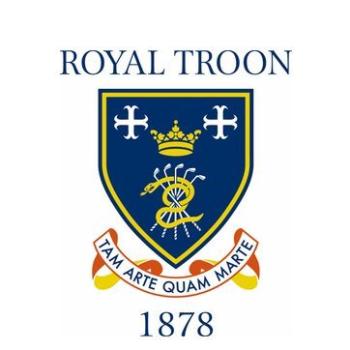It was an exciting U.S. Open finish at Merion Golf Club two weeks ago. The Englishman Justin Rose, after having contended in several of the four majors, finally won his first major championship. He defeated crowd favorite and best left-hander to ever grace the fairways—American Phil Mickelson. Amazingly, it was Phil’s unprecedented sixth runner-up finish in the U.S. Open without ever having won that tournament. So far, Phil has won 4 majors–three Masters and one PGA Championship–and 41 PGA Tour tournament wins.
And it was the 5th time the U.S. Open had been played at Merion Golf Club. The most noticeable feature about this golf course is its wicker baskets. Instead of having flags attached at the top of the flagsticks, like every other golf course, Merion has red-colored baskets attached to the top of its 18 flagsticks. It’s a tradition that apparently came from Scotland–the birthplace of golf.
I wonder if Merion is the only golf course in the U.S. that uses wicker baskets. Why did they come into existence? Apparently, the historians don’t know for sure, since it is often reported that it is a mystery. I have a suggestion as to their origin. The wind can blow you down in blimey, Scottish weather. The rain can fall there almost horizontally. Such rough conditions would have caused flags made of cloth to wear out soon. That may be why they invented wicker baskets. Foul weather can’t ruin them.
I played in the 1971 U.S. Open at Merion Golf Club when Lee Trevino defeated Jack Nicklaus in a playoff to win our coveted national championship. As both players stepped on the first tee for that 18-hole playoff, on Monday, Lee added to American professional golf lore by taking a rubber snake out of his golf bag and throwing it at Jack. The result was much laughter from the crowd, including from Jack. Nicklaus soon was paying Trevino quite a compliment by saying, “Lee doesn’t know how good he is.”
I made the 36-hole cut in that tournament and tied for 27th. My main memory of my play that week was something that happened on one of the holes on the front nine, on either the second or third round: the wooden head of my driver split when I hit my tee shot. The club head didn’t totally divide in half, but it had a huge crack in the face all the way to the back of the head. I then had to finish the round using my three-wood off the tee on par fours and par fives, thus forfeiting some distance off the tee.
However, at Merion it’s not a bad idea to use a three-wood off the tee on some of those tight fairways, as we saw players do on television in the Open. Merion was the shortest golf course the pros have played in a U.S. Open for several years. Because of that, but mostly the narrow fairways and thick rough typical of U.S. Opens, many players used something other than their driver off some tees.
Why did my driver break in that 1971 U.S. Open? Now I’m going to divulge something I’ve never made public. From 1969 to 1979, I made and played with hollowed-out, perimeter-weighted, wooden-headed drivers in all PGA Tour tournaments. There was nothing illegal about it. But then, hardly anyone knew about it. Only a few of my closest colleagues on Tour knew, and they were sworn to secrecy. Why? I thought when my PGA Tour career came to an end I might start a golf club manufacturing company mostly for the purpose of making hollow wood clubs, but preferably making them out of metal.
Actually, someone had already done that. When I used to play in the Tour tournament at Akron, Ohio, I sometimes visited Kosar Golf Company to have them work on my golf clubs in their repair facility and to check out their golf clubs. That was a very innovative company. During the 1950s, they invented and patented the first golf ball dispensing machine which was used at driving ranges. And about the same time, they designed and made the first hollow metalwood. It, too, was used only at driving ranges.
When I was growing up in Seattle, Washington, I used to see those aluminum-headed Kosar drivers at many driving ranges. Most golfers thought of it as only a driving range club, thus not any good for playing with on the golf course. And Kosar only marketed it to driving ranges. That club head was somewhat smaller than a conventional, wood-headed driver. That gave it the appearance of being more difficult to hit the ball solidly. And its club face was shallower than that of a standard, wood-headed driver as well, making it more apt to hit a skied tee shot. But, except for breaking its steel shaft, even the worst hacker couldn’t break that metalheaded Kosar driver. We used to joke about that club.
But by 1970, that aluminum-headed Kosar driver was no longer a joke to me. I became very intrigued with it. So, I bought two of them. Then I sawed one of those club heads in half to see how their inside was constructed. I especially wanted to know if they had any special design which might reinforce the sides of the club head, preventing them from collapsing. There wasn’t much to it.
I continued to hollow out wood clubs, mostly drivers. I estimate that I hollowed out perhaps thirty drivers. Eventually, I experimented with making driver heads out of various metals, especially aluminum and magnesium. But I never got serious enough about it to seek assistance from golf club manufacturers. Actually, I didn’t want them to know what I was doing. As far as I knew, no one else was doing it. So, it remained pretty much a hobby for me. However, I did spend a lot of time doing it.
Then, at the beginning of our 1979 Tour season, a guy showed up on Tour by the name of Gary Adams. He was the president and owner of a brand new, small, golf club company named Taylor Made Golf Company. Gary was trying to interest us pros in using his new, hollow, metalwood driver. Its club head was exactly what I had wanted to make—a stainless steel, hollow, empty shell.
My friend George Archer knew about my hollowed-out wood drivers. As soon as he saw Gary’s club on the range at Torrey Pines Golf Course during the Andy Williams San Diego Open, and he hit some balls with it to see how good it was, he promptly told me about it. I may have been one of the first three pros to start playing TaylorMade metalwoods on the PGA Tour. I remember that the first two guys were Jim Simons and then George Archer.
This first TaylorMade driver was made for amateurs since it had a 12° loft. In those days, the average loft on a Touring pro’s wooden driver club head would have been about 10°. Plus, the club face of that first TaylorMade driver was too shallow from top to bottom. Both of these factors caused most of us Touring pros to use it as a long-hitting fairway wood club rather than as a driver off the tee.
Right there, when I met Gary Adams, I told him the same thing I told Karsten Solheim twelve years earlier. I told Gary he would revolutionize the wood club industry. And that he did, improving the club continuously. Only months later, at the PGA Championship that summer, almost 50 entrants had that new TaylorMade driver in their bag. Five years later, in 1984, Salomon S.A., a French ski equipment company, acquired TaylorMade. By then, more pros on the PGA Tour played a TaylorMade driver than any other driver. (That statistic has remained the same to this day.) It wasn’t long before most golf club manufacturers quit making golf clubs with wooden heads and only made metalwoods for driving and fairway. In 1997, the giant athletic shoe company Adidas acquired Salomon and thus TaylorMade.
Gary Adams was mostly interested in achieving more distance with his stainless steel driver. The two-piece golf ball had recently been invented with its indestructible surlyn cover. Gary discovered from testing that a metal club face could hit those surlyn golf balls farther than a wooden club face with a conventional plastic insert could hit them. Pros didn’t play surlyn-covered balls because they didn’t get sufficient backspin with them. But Gary was interested in creating a driver with which the average golfer could hit the ball farther. The fact that golfers might be able to hit the ball farther as well as straighter with his metalwood due to perimeter weighting would be a bonus. At first, Gary had to contend with the face of his metalwoods collapsing slightly when used by golfers who hit the ball far, such as pros.
How did I get the idea ten years earlier to make hollowed-out wood drivers and play them on the PGA Tour for all of those years? It happened because I learned about an engineering principle called “perimeter weighting” from someone who became a very dear friend of mine.
(My goal for these Monday posts on golf is for them to be published as a book. My working title for it is Christ on the PGA TOUR.)












